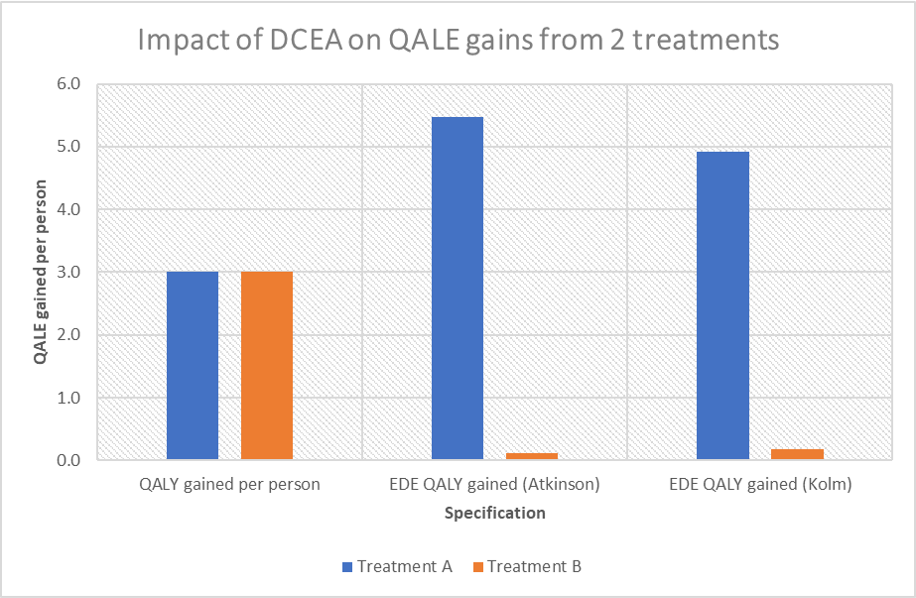Distributional Cost Effectiveness Analysis: A simple example

I’ve written beforehand in regards to the want for distributional cost-effectiveness evaluation (DCEA) which might enhance the worth of therapies who enhance the well being for people who presently have the worst anticipated quality-adjusted life expectancy (QALE). I’ve written about this in AJMC and Well being Affairs amongst different locations. One key query many people could have is the best way to truly implement DCEA.
A method to take action is to comply with the Love-Koh et al. (2019) strategy. There are six key steps to this strategy.
- Outline the related teams of curiosity
- Measure illness prevalence by group
- Measure affect of the expertise
- Establish preferences for fairness vs. effectivity
- Calculate the equally-distributed equal QALY features
- Use EDE QALY to do customary CEA modelling.
Step one is to outline your teams. This could possibly be by geography, age, socioeconomic standing, and many others. Defining the group is analytically easy, however could be a problem as there isn’t any “proper” group subdivision. Additional, the groupings will need to have accessible information.
The second step is to measure the prevalence (or incidence of the illness) and the third step is to measure remedy effectiveness. Within the instance under, remedy A improves the QALE for teams 1, 2 and three that are comparatively deprived; remedy B improves QALE for teams 3, Four and 5 who’re comparatively advantaged (from a QALE standpoint). On this instance, it could possibly be the case that the illness that Therapy A impacts solely impacts teams 1, 2, and three (and B impacts solely 3, Four and 5) or it could possibly be the case that the illness impacts all people however the remedy solely works for teams 1, 2 and three (or 3, Four and 5 for remedy B). Clearly, remedy A improves well being outcomes for the comparatively deprived and remedy B improves well being outcomes for the comparatively advantaged.
A key query then, is how do you calculate the cost-per-QALY below the DCEA strategy? To reply that query, it is advisable full steps 4, 5 and 6 above. I accomplish that utilizing based mostly on preferences for relative inequality aversion (an Atkinson index) or an absolute inequality aversion (with a Kolm index). You will discover the pattern calculation workbook HERE.
The outcomes from this easy instance are proven within the graphics under below assumption that the related inequality aversion parameter for the Atkinson index is 10.95 and for the Kolm index is 0.15. You may, nevertheless, obtain the spreadsheet and check out how totally different inequality aversion parameters would affect the outcomes.









